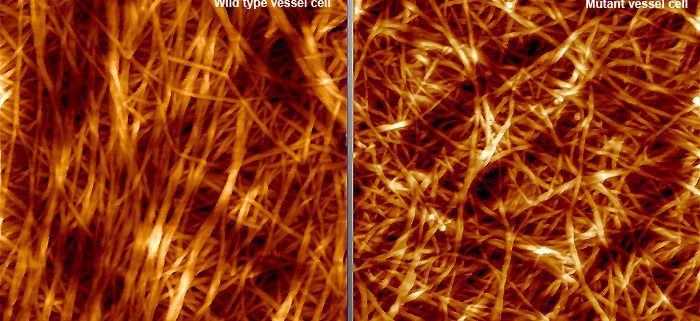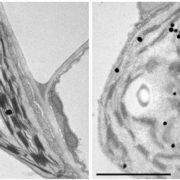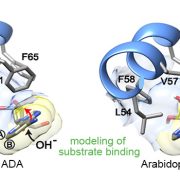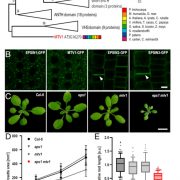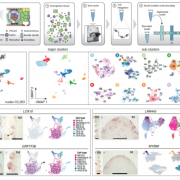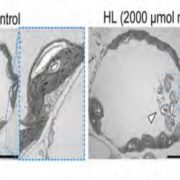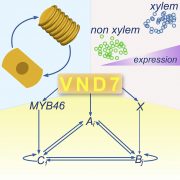Acetylation in the Assembly of Cell-Wall Architecture
Zhang et al. discover a deacetylase from rice that highlights the importance regulating acetylation in the cell wall. Plant Cell https://doi.org/10.1105/tpc.18.00894
By Baocai Zhang and Yihua Zhou, Institute of Genetics and Developmental Biology, Chinese Academy of Sciences
Background: Plant cells are encased in structurally diverse polymers, which are assembled into a fibrous network, forming the plant cell walls. Acetylation, a common modification on cell-wall polymers, affects polymer properties and determines how these polymers interact. Increasing evidence revealed that acetylation profile on cell-wall polymers is tightly controlled, indicating a regulatory machinery to orchestrate cell-wall architecture and plant growth. Arabinoxylan is an important hemicellulosic polysaccharide modified with majority of acetyl esters. Furthermore, xylan interacts with cellulose and lignin, the other two cell-wall major polymers, via the two- and three-fold conformation that is modulated by the balance of acetylation and deacetylation according to plant-growth demands. Hence, comprehensive understanding of the mechanisms underpinning the control of xylan acetylation is crucial for elucidating cell-wall architecture and functions.
Question: We wanted to know how plants regulate and establish the cell-wall acetylation profile in response to growth requirements. We aimed at identifying a new xylan deacetylase that can control acetylation pattern and xylan conformation from our previously discovered new family of deacetylases.
Findings: We screened acetyl esterases likely involved in arabinoxylan modification by purification of the total membrane proteins extracted from rice internodes combined with enzymatic assays. Protein mass spectrometry analysis identified several GDSL esterases; DARX1 is one of them. Mutations in DARX1 resulted in accumulation of acetates on arabinosyl side chains of xylan, which could be abolished by recombinant DARX1 in vitro. Moreover, solid-state NMR spectroscopy and atomic force microscopy revealed that the abnormal acetylation pattern in darx1 interrupts arabinoxylan conformation and cellulose microfibril orientation, resulting in compromised secondary wall structure and reduced mechanical strength. Our finding in identifying an arabinosyl deacetylase, a new enzyme, provides insight into how the arabinoxylan acetylation pattern, as well as its conformations, are established, which suggests a strategy to breed robust elite crops.
Next steps: How do minor changes in xylan side chain give rise to dramatic effects on cell-wall architecture? Characterization of acetyl esterases, such as DARX1, open the door for understanding of the complicated relationship between polysaccharide acetylation profile and cell-wall structure, which is important for uncovering how functional cell walls are built.
Lanjun Zhang, Chengxu Gao, Frederic Mentink-Vigier, Lu Tang, Dongmei Zhang, Shaogan Wang, Shaoxue Cao, Zuopeng Xu, Xiangling Liu, Tuo Wang, Yihua Zhou, Baocai Zhang. (2019). Arabinosyl Deacetylase Modulates the Arabinoxylan Acetylation Profile and Secondary Wall Formation. Plant Cell. https://doi.org/10.1105/tpc.18.00894.
Key words: Acetylation, xylan, architecture, conformation


